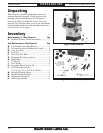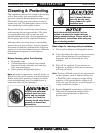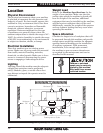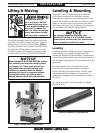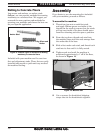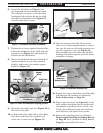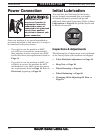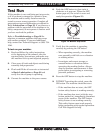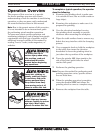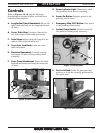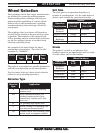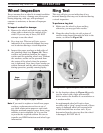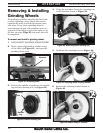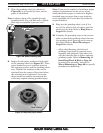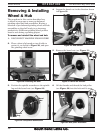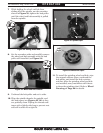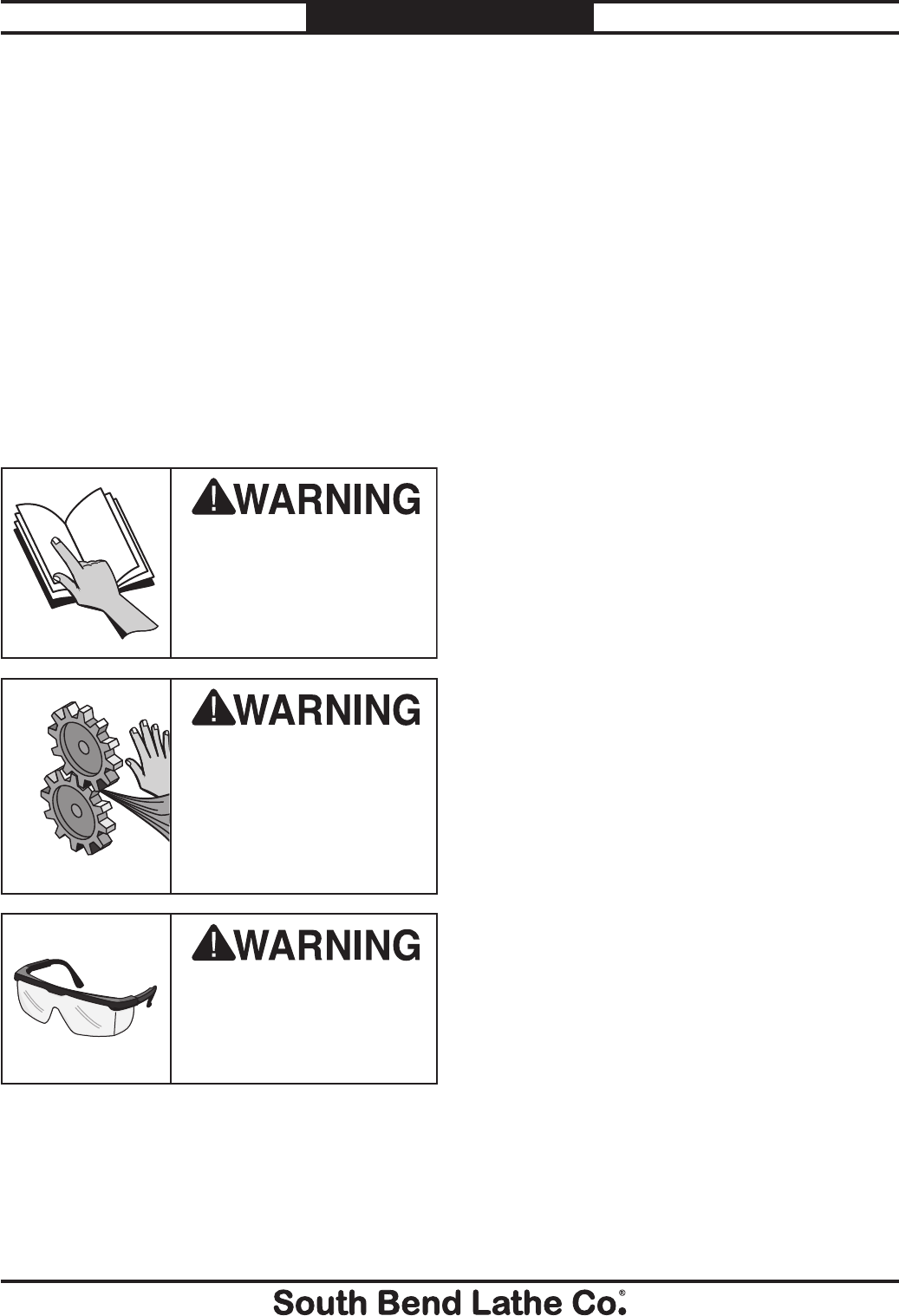
-20-
For Machines Mfg. Since 8/09
Model SB1029
OPERATION
To complete a typical operation, the operator
does the following:
1. Examines the grinding wheel to make sure
it is suitable for use (has no visible cracks or
large chips).
2. Examines the workpiece to make sure it is
prepared for grinding.
3. Uses the elevation handwheel to raise
the grinding wheel assembly to provide
clearance when mounting the workpiece.
4. Wipes the table surface clean to remove any
debris that may interfere with the clamping
process.
5. Uses a magnetic chuck to hold the workpiece
to the table, then turns the elevation
handwheel to lower the grinding wheel to
just above the top surface of the workpiece.
6. Turns the grinder ON, then stands to the
side of the wheel path while the wheel
reaches full speed.
7. Performs the grinding operation.
Note: Because the method for performing each
grinding operation varies, specific actions
are not listed here.
8. When the grinding operation is complete,
turns the machine OFF and allows the
grinding wheel to come to a complete stop.
9. Removes the workpiece from the table.
OPERATION
Operation Overview
Loose hair, clothing, or
jewelry could get caught
in machinery and cause
serious personal injury.
Keep these items away
from moving parts at all
times to reduce this risk.
During operation, small
metal chips may become
airborne, leading to serious
eye injury. Wear safety
glasses to reduce this risk.
To reduce the risk of
serious injury when using
this machine, read and
understand this entire
manual before beginning
any operations.
The purpose of this overview is to provide
the novice machine operator with a basic
understanding of how the machine is used durin
g
operation, so they can more easily understand
the controls discussed later in this manual.
Note: Due to the generic nature of this overview,
it is not intended to be an instructional guide
for performing actual machine operations.
To learn more about specific operations and
machining techniques, seek training from people
experienced with this type of machine, and do
additional research outside of this manual by
reading "how-to" books, trade magazines, or
websites.



